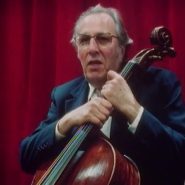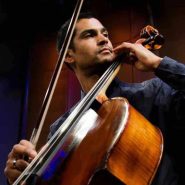Tag: bow control
By Robert Jesselson October 13, 2018
By Robert Jesselson October 7, 2018
Subjects Repertoire, Technique
By Robert Jesselson September 30, 2018
Subjects Repertoire, Technique
By Arnold Steinhardt February 24, 2014
Subjects Artists
Tags Arnold, Arnold Steinhardt, artist, bold, bow control, Brahms B Major piano trio, cellist, cello, cellobello, David, David Soyer, distinctive, Ford Honors, Ford Motor Company, Guarneri String Quartet, historian, impeccable intonation, John Dalley, Marlboro Music School, Michael Tree, music, musicians, Soyer, Steinhardt, Style, Touring, Travel, tribute, University of Michigan, writer
By Arnold Steinhardt September 10, 2013
Subjects Artists, Repertoire
Tags accompany, arpeggios, artistry, assistant concertmaster, beauty, Beethoven, Boston, Boston Symphony Orchestra, bow, bow control, Camille Saint-Saëns, Carnival of the Animals, cello, cellobello, changes, child, CIM, Cleveland Institute of Music, Cleveland Orchestra, connections, creativity, depth, difference, discussion, double major, essence, exceptions, extended melodies, fiddlers, Hess, ideas, improvement, intimate, intonation, Jules Eskin, Mary, melody, music, musical essence, musicality, musicianship, permier music school, phrase, phrasing, phrasing alterations, piano, re-evaluate, respect, rocking, scientists, sections of music, singing, string quartets, swaying, The Swan, tone production, vibrato, violin master-class, work
By Jonathan Pegis January 9, 2013
Subjects Orchestra, Repertoire
Tags audition excerpt, Auditions, Beethoven, Beethoven Symphonies, Beethoven's 5th Symphony, bow control, bowings, breathing, cello, cello excerpt, cellobello, control, effortless, experiment, experimentation, fingerings, intonation, Jonathan, Northwestern, pacing, Pegis, phrasing, slow breathing, string crossings, Symphony, tempo, variations, variations on a theme, vibrato
By Jonathan Pegis December 11, 2012
Subjects Orchestra, Repertoire
Tags attention to detail, Beethoven, Beethoven Symphonies, Beethoven's 5th Symphony, bow control, bow technique, cello, cello excerpt, cellobello, continuous vibrato, details, dynamics, Excerpts, intonation, Jonathan, legato, melody, musicality, Pegis, phrasing, practice tips, Preparation, Rhythm, shifting, singing, Sound, sound production, technical challenges, tempo, vibrato
By Jeffrey Zeigler April 18, 2012
Subjects Repertoire










